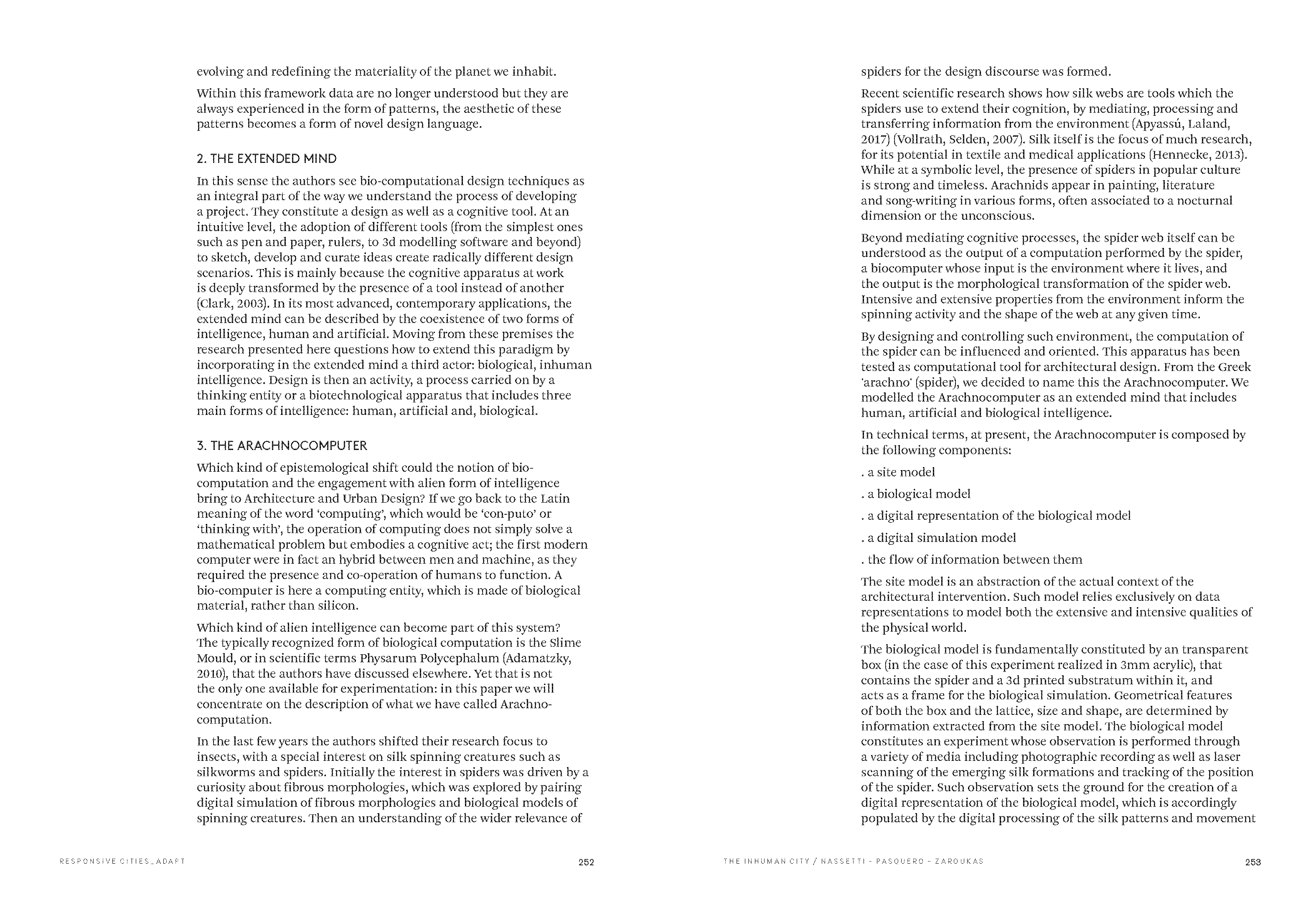Beyond mediating cognitive processes, the spider web itself can be understood as the output of a computation performed by the spider, a biocomputer whose input is the environment where it lives, and the output is the morphological transformation of the spider web.









by Claudia Pasquero, Filippo Nassetti and Emmanouil Zaroukas
published in Responsive Cities: Disrupting through circular design, Symposium Proceedings 2019, edited by Areti Markoupoulou, p. 250-267
The Inhuman City aims at mobilizing multiple forms of intelligence, human and non-human, to redefine the urban.
In this paper the authors describe design as an activity carried on by a biotechnological apparatus, or extended mind, that includes different forms of intelligence: human, artificial, biological. By connecting biological models, digital simulations and advanced fabrication technologies, information is looped between the physical and the digital realms, extracted from material systems and processed with computational simulations, to be materialized through fabrication and fed back into matter.
The specific case of the Arahnocomputer is described, a biotechnological apparatus which includes spiders and their silk webs. The results of this research demonstrate the potential of the notion of ambiguous computation, intended both at epistemological level and in its spatial actualisation.
The Inhuman City rethinks the urban in a post-capitalistic future which is designed as form of inhuman society by constructing and investing on extended minds such as an Arachnocomputer. This computational synthesis operates not as analogy but proper mechanism of furthering metabolic processes on the planet avoiding rifts and dead ends. The Inhuman City becomes our starting point for the urban and therefore the planet of the post-Anthropocene.